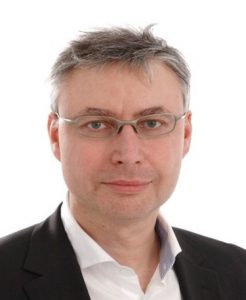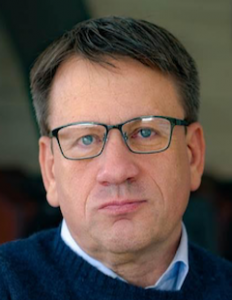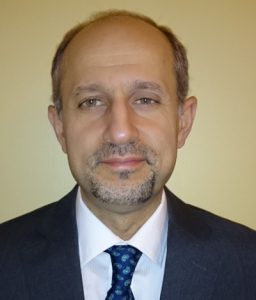Thursday, June 28, 2018
4:00 p.m. – 5:30 p.m.
Room: Cartier
How to design smart softwarized networks to meet the challenges of low-latency services?
Rationale: Currently, network operators and service providers are adopting network softwarization models. These models allow for faster and easier deployment, configuration, and updating of network functions. There is a current trend towards augmented and virtual reality (AR/VR), applications requiring high bandwidths and ultra-low latency. These AR/VR applications can be used for efficient collaborations between remote participants, smart city use cases, entertainment, but also in healthcare and therapy scenarios. These applications are highly interactive and hence require an ultra-low latency network.
Before the mentioned applications can be widely deployed and used to their full potential, the question remains to be answered whether large-scale adoption of softwarization models will allow for robustly providing ultra-low latency applications. Several research efforts are ongoing to make sure that softwarized networks can meet the needed low-latency requirements and are robust in the occurrence of failures of network components, servers, and even datacenters. It is also unclear whether current network security solutions will be able to efficiently cope with large-scale virtualized networks environments and be resilient against intrusion attempts and massive denial-of-service attacks.
For this reason, we gather distinguished experts from industry and academia with large expertise in this area, who will provide us interesting insights.
The following topics -amongst others- will be discussed:
- how can AI and ML help for robustly providing ultra-low latency applications?
- can ultra-low-latency be achieved in softwarized networks?
- how to provide fault diagnosis and fast recovery in virtualized environments?
- how will security management further evolve in softwarized networks?
- etc.
We expect lively discussions and count on all NetSoft 2018 participants (PhD students and experienced researchers from industry and academia) to ask questions and share their viewpoints.
Panel Moderator
- Olivier Festor, TELECOM Nancy, France
Olivier Festor is a Professor in Computer Science and Director of TELECOM Nancy, the graduate and engineering CS school of Université de Lorraine. His research interests are in the design of algorithms and solutions for automated management of large-scale networks and services. Chair of the IFIP TC6 WG6.6 and former Co-Chair of the IRTF NMRG, he serves in several TPCs as well as in the editorial boards of the major international conferences and journals in Network and Service Management.
Panel Members
- Alex Galis, University College London, UK
- Sławomir Kukliński, Orange Poland and Warsaw Technical University, Poland
- Richard Li, Huawei Future Research, USA
- Makan Pourzandi, Ericsson Research, Canada
Alex Galis is a Professor in Networked and Service Systems at University College London (UCL). His current interests are on 5G networking, software defined infrastructure and services, network and cloud programmability and management. He has co-authored more than 280 publications in the future Internet areas: networks and services, management, networking clouds, virtualization and programmability including 10 research books. He has contributed to ITU-T standards on Future Networks and 5G Networks and he has worked on IETF drafts in Autonomic networking and network slicing. He has been a co-principal investigator at UCL on a number of EU research projects with a total UCL budget of more than 10 M£, including overall technical leadership of the MISA – Management of IP networks, FAIN – programmable networks, CONTEXT – context aware networking, AUTONOMIC INTERNET – autonomic network and NECOS – Novel Enablers for Cloud Slicing projects. He was a member of the Steering Group of the Future Internet Assembly (FIA) and he led the Management and Service–aware Networking Architecture (MANA) working group at FIA. He was selected as a Vice-Chair of the ITU-T SG13 Group on Future Networking. He has been involved in the IEEE SDN initiative including co-chairing of the IEEE SDN publication committee. He is a co-editor of IEEE JSAC series on Network Softwarization and Enablers, ETRI Journal published by Wiley and of the IEEE Communications Magazine feature topic on Advances in Networking Software. He acted as TPC/keynotes/ panels/workshops co-chair of 14 IEEE conferences including TPC co-chair of 1 st IEEE Network Softwarization 2015 (NetSoft 2015, hosted by UCL in London) and reviewer in more than 100 IEEE conferences and journals. He is an International Academy, Research, and Industry Association (IARIA) Fellow.
Dr. Sławomir Kukliński received his Ph.D. with honors from Warsaw University of Technology in 1994, and since then, he is Assistant Professor there. He is teaching about mobile and wireless systems. From 2003 he has been also working for Orange Polska as research expert focused on mobile and wireless systems with emphasis to self-managed solutions. At present, he is interested in the application of cognitive techniques to control, management and orchestration of SDN and 5G networks. He led many national research projects as principal investigator and was involved in many international projects, including FP6 MIDAS, FP7 EFIPSANS, FP7 4WARD, FP7 ProSense, Celtic COMMUNE, he coordinated Polish-Luxembourgish project on Cognitive SDN (CoSDN). At present, he is involved EU-Japan project 5G!Pagoda. He was working on SDN standardization in ITU-T (Study Group 13) and now is involved in IETF activities on network slicing. Slawomir Kukliński has published more than 50 conference and journal papers, served as a member of TPC of many conferences and gave several invited keynotes.
 Dr. Renwei Li (Richard Li) works as Chief Scientist and Vice-President of Future Networks, Huawei USA. His main interests include, but not limited to, network architectures, technologies, protocols, solutions, and software for future applications such as industrial digitalization, vehicular networks, industrial internet, tactile networks, networked AR/VR, and many others promised and enabled by 5G. Richard also serves as Vice Chair of ETSI NGP, an industrial specification group on next-generation protocols within European Telecommunications Standards Institute (ETSI). In the past with Huawei, Richard worked as Chief Architect and Vice-President of the Internet Technology Lab of Huawei USA and spearheaded the technology invention and software development in the area of Routing and MPLS, Cloud and Virtualization, SDN, and Orchestration. Prior to joining Huawei, Richard worked with Cisco and Ericsson, being a major contributor to their networking technologies, standards, solutions and operating systems. Richard received his PhD degree in Mathematics with specialization in AI and Computer Science from Instituto Superior Técnico, Universidade de Lisboa. He has also studied or worked in Simon Fraser University, Universidade Nova de Lisboa, and Chinese Academy of Sciences, respectively.
Dr. Renwei Li (Richard Li) works as Chief Scientist and Vice-President of Future Networks, Huawei USA. His main interests include, but not limited to, network architectures, technologies, protocols, solutions, and software for future applications such as industrial digitalization, vehicular networks, industrial internet, tactile networks, networked AR/VR, and many others promised and enabled by 5G. Richard also serves as Vice Chair of ETSI NGP, an industrial specification group on next-generation protocols within European Telecommunications Standards Institute (ETSI). In the past with Huawei, Richard worked as Chief Architect and Vice-President of the Internet Technology Lab of Huawei USA and spearheaded the technology invention and software development in the area of Routing and MPLS, Cloud and Virtualization, SDN, and Orchestration. Prior to joining Huawei, Richard worked with Cisco and Ericsson, being a major contributor to their networking technologies, standards, solutions and operating systems. Richard received his PhD degree in Mathematics with specialization in AI and Computer Science from Instituto Superior Técnico, Universidade de Lisboa. He has also studied or worked in Simon Fraser University, Universidade Nova de Lisboa, and Chinese Academy of Sciences, respectively.
Dr. Makan Pourzandi is a research leader at Ericsson, Canada. He received his Ph.D. degree in Computer Science from University of Lyon I Claude Bernard, France and M.Sc. in parallel computing from École Normale Supérieure de Lyon, France. He co-authored a book on software security published by Springer on 2015 and is the co-inventor of 16 granted US patents. He has published more than 60 research papers in peer-reviewed scientific journals and conferences. His current research interests include security, cloud computing, software security engineering, cluster computing, and component-based methods for secure software development.











